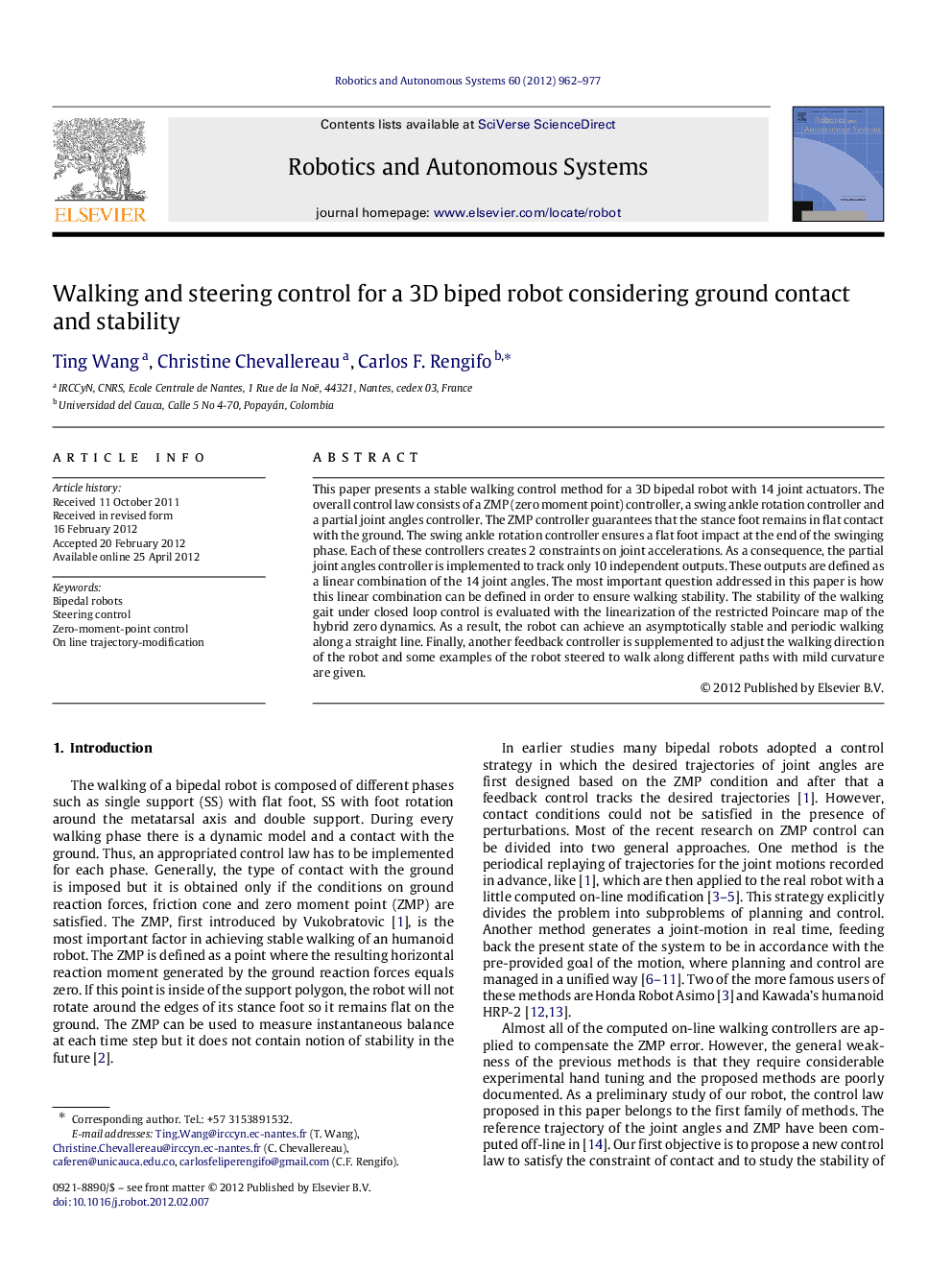| Article ID | Journal | Published Year | Pages | File Type |
|---|---|---|---|---|
| 413144 | Robotics and Autonomous Systems | 2012 | 16 Pages |
This paper presents a stable walking control method for a 3D bipedal robot with 14 joint actuators. The overall control law consists of a ZMP (zero moment point) controller, a swing ankle rotation controller and a partial joint angles controller. The ZMP controller guarantees that the stance foot remains in flat contact with the ground. The swing ankle rotation controller ensures a flat foot impact at the end of the swinging phase. Each of these controllers creates 2 constraints on joint accelerations. As a consequence, the partial joint angles controller is implemented to track only 10 independent outputs. These outputs are defined as a linear combination of the 14 joint angles. The most important question addressed in this paper is how this linear combination can be defined in order to ensure walking stability. The stability of the walking gait under closed loop control is evaluated with the linearization of the restricted Poincare map of the hybrid zero dynamics. As a result, the robot can achieve an asymptotically stable and periodic walking along a straight line. Finally, another feedback controller is supplemented to adjust the walking direction of the robot and some examples of the robot steered to walk along different paths with mild curvature are given.
► A robust control law for walking with controlled evolution of the ZMP. ► Joint reference is adapted on line in a way that preserves stability. ► Stability is theoretically studied by Poincaré method. ► With a unique motion reference, the direction of walking can be chosen.
